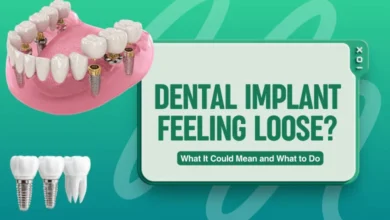Can’t Hear? Treatments for Hearing Loss

Have you ever found yourself struggling to hear the sound of a bird chirping or your loved one’s voice? If so, you may be experiencing hearing loss.
Luckily, there are various treatment options available for those who struggle with hearing loss. In this blog post, we’ll explore some effective methods that can help improve your ability to hear and get back to enjoying life again if you cant hear!
Hearing Aids
Hearing aids are perhaps the most common treatment for hearing loss. These devices amplify sound so that those with hearing impairments can hear more clearly. They work by picking up sounds through a microphone and then converting them into electrical signals which are then processed and amplified through a speaker.
One of the benefits of hearing aids is that they come in various styles, including:
- behind-the-ear (BTE)
- in-the-canal (ITC)
- completely-in-the-canal (CIC)
- invisible-in-the-canal (IIC)
This means you can choose one that best suits your needs and preferences. Some modern hearing aids have advanced features such as Bluetooth connectivity. This allows you to stream audio from your phone or TV directly to your device.
Cochlear Implants
Cochlear implants are electronic devices designed to help people with severe hearing loss or deafness. The implant is placed under the skin behind the ear and electrodes are inserted into the inner ear. These electrodes stimulate the nerve fibers responsible for hearing. It can bypass the damaged hair cells in the cochlea.
Cochlear implants have revolutionized treatment for those who cannot use traditional hearing aids. They can help restore not only basic sounds but also speech discrimination. This allows individuals to communicate better with those around them.
The process of receiving a cochlear implant involves an evaluation by an audiologist and a team of specialists. They will determine if this device is right for you based on your degree of hearing loss, age, medical history, and other factors.
Assistive Listening Devices ALDs
Assistive Listening Devices (ALDs) are devices that help people with hearing loss to better understand speech and other sounds in certain situations. These devices work by amplifying or clarifying sound. This makes it easier for users to hear more clearly.
One type of ALD is a personal amplifier. It is a small device worn on the body that picks up and amplifies nearby sounds. This can be helpful in noisy environments like restaurants or meetings.
Another type of ALD is an FM system. It uses radio waves to transmit sound from one person speaking into a microphone directly into the user’s hearing aids or cochlear implant processor. This can be useful in classrooms or other large group settings.
Hearing Loops
Hearing loops are a form of assistive listening technology that can greatly benefit those who experience hearing loss. They work by transmitting sound directly to a listener’s hearing aid or cochlear implant through the use of a magnetic field.
One of the biggest advantages of hearing loops is their versatility. They can be installed in a variety of settings, including:
- homes
- offices
- theaters
- churches
Another great feature of hearing loops is their ease of use. Once installed, listeners simply need to switch their hearing aids or implants to the “T” setting to receive sound via the loop.
Bone-Anchored Hearing Aids Bahas
Bone-anchored hearing aids (BAHAs) are a type of hearing aid that works by transmitting sound vibrations. This is done directly to the inner ear through bone conduction. They can be beneficial for individuals with conductive or mixed hearing loss or single-sided deafness.
The BAHAs consist of two parts; an implant that is surgically attached to the skull behind the ear and an external processor that sits on top of the implant. The external processor picks up sounds and transmits them as vibrations through the implant. This is to stimulate the inner ear.
BAHAs provide a more comfortable and secure fit than traditional hearing aids. This is because they do not require inserting anything into your ear canal. Moreover, they offer improved sound quality in noisy environments and reduce feedback or whistling sounds.
Auditory Training
Auditory training is a type of therapy that helps individuals with hearing loss improve their listening skills. This therapy involves exercises designed to help the brain process. It helps interpret sound signals more effectively.
During auditory training, patients may practice discriminating between different sounds or identifying speech in noisy environments. These exercises can be done both in person with a therapist or through computer programs at home.
Research has shown that auditory training can lead to improved communication abilities for those with hearing loss. It’s important to note that this therapy is often most effective when used in conjunction with other treatments. This includes hearing aids or cochlear implants.
Medications
Medications can also be used to treat hearing loss. However, it is important to note that not all types of hearing loss are treated with medications.
For sudden sensorineural hearing loss (SSHL), corticosteroids may be prescribed. These medical treatments help reduce inflammation in the inner ear and improve blood flow. This can potentially restore some degree of hearing.
Other types of hearing loss caused by infections or autoimmune disorders may also benefit from medication treatment. Antibiotics or antifungal drugs can help clear up infections that have affected the ear canal.
Immunosuppressants may be useful for treating autoimmune-related damage to the inner ear. It’s important to remember that medication treatments for hearing loss should always be prescribed and monitored by a qualified healthcare professional.
Surgery
Surgery for hearing loss is usually reserved for severe cases. This is for hearing loss cannot be treated with other methods such as hearing aids or cochlear implants.
The most common type of surgery used to treat hearing loss is called a stapedectomy. It involves removing part of the bone in the middle ear and replacing it with a prosthesis.
Another surgical procedure used to treat hearing loss is called a cochlear implant. This involves an electrode being placed directly into the inner ear. It is then connected to an external device that bypasses damaged hair cells in the ear. After that, it sends signals directly to the auditory nerve.
Surgical options for treating hearing loss can come with risks, including:
- infection
- facial paralysis
- tinnitus
- dizziness
Therefore, these procedures are typically only recommended if other treatments have been ineffective.
Know What Treatments to Consider if You Cant Hear
If you cant hear, there are numerous treatments to consider. Hiring knowledgeable professionals, such as an audiologist, can help identify a fitting solution. Don’t suffer from hearing loss any longer; make an appointment with an audiologist today to hear again!
Visit our blog for more reads.





